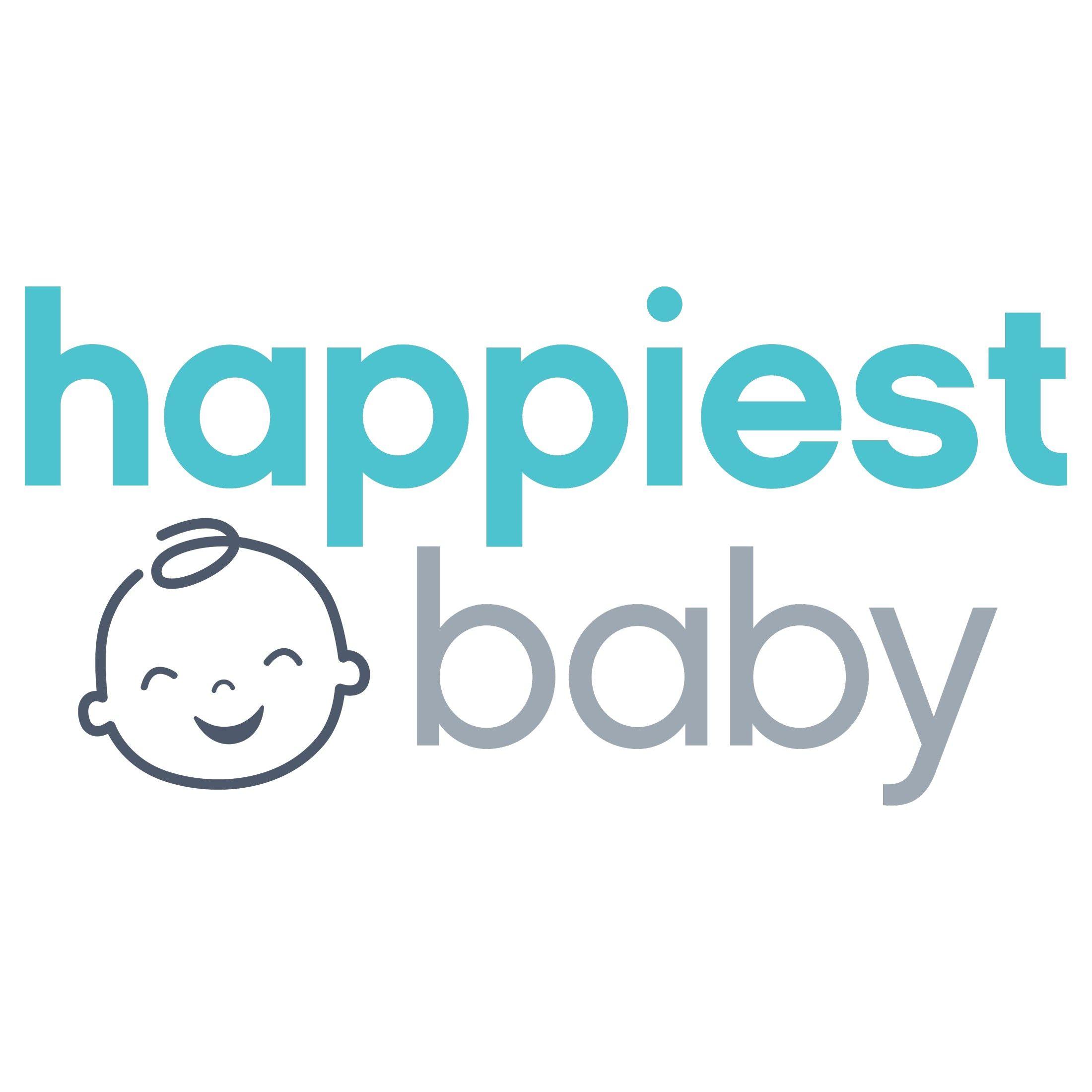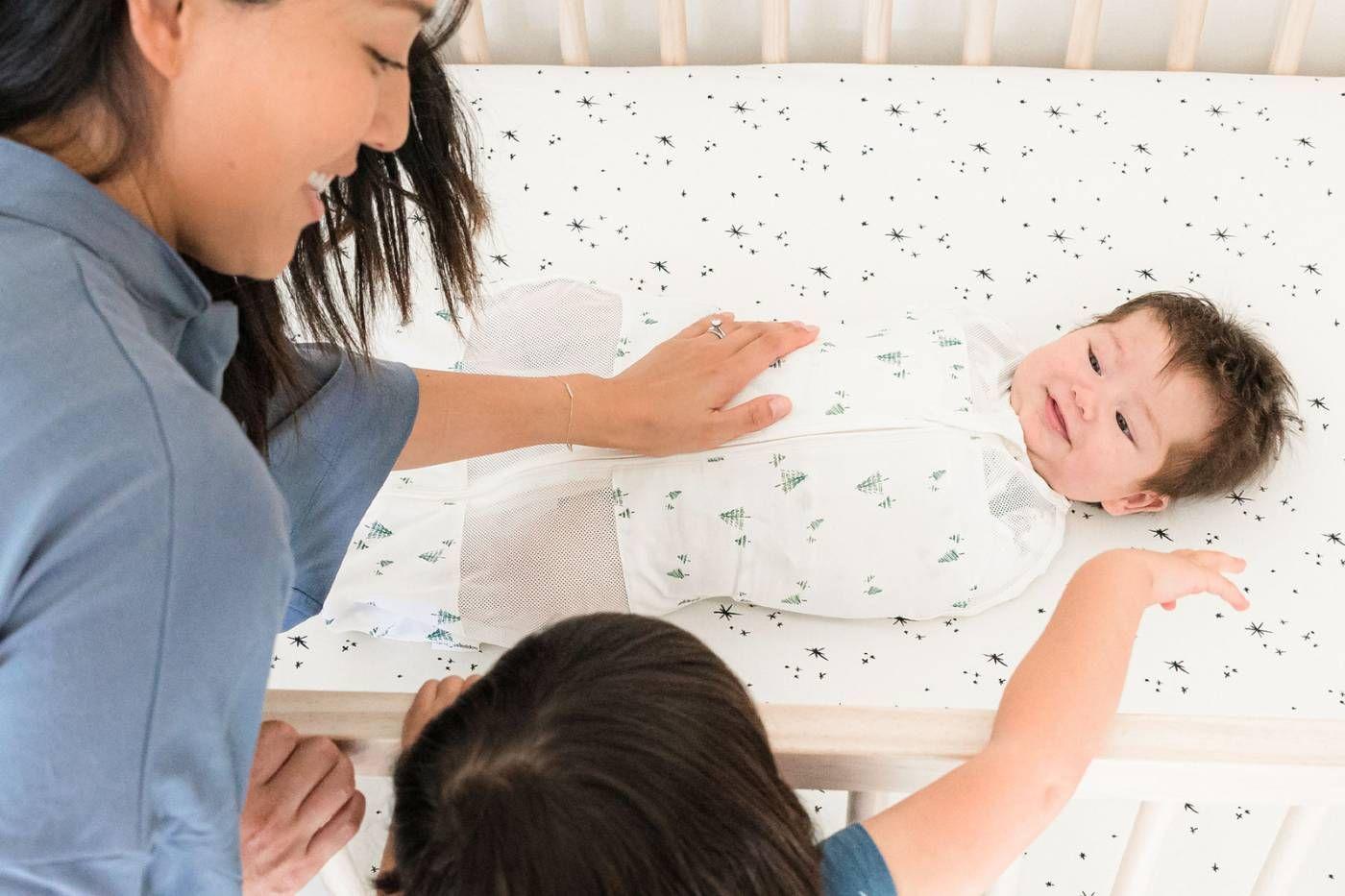BABY
The Best Swaddle: What to Look for in a Baby Swaddle
How do you choose a swaddle? Simple. Follow our swaddle buying guide.

Written by
Happiest Baby Staff

SHARE THIS ARTICLE
PARENT PICKS
Bestsellers
BABY

Written by
Happiest Baby Staff

SHARE THIS ARTICLE
Bestsellers
There are so many baby swaddles out there, each one claiming to be the best swaddle, which makes choosing the best swaddle for Baby really tricky for new and expecting parents. For help keeping unsafe swaddles out of your baby’s cot and help narrowing down your perfect pick—check out our step-by-step swaddle buying guide. Here, what to look for in a baby swaddle—plus, why swaddles are a must-add to every baby registry.
The age-old practise of swaddling—aka wrapping your baby like a burrito—offers babies a sense of comfort, familiarity, and security. That is why the National Childbirth Trust (NCT) notes that, when done correctly, swaddling can effectively help calm infants and promote sleep. That is also why nurses and midwives always swaddle newborns! Here is what swaddling can do for your baby:
You should swaddle your baby for naps and nighttime sleep from the start…and continue doing so throughout your baby’s missing fourth trimester. This is a period of three to four months after birth when your newborn’s still-developing brain and nervous system remain reliant on the womb-like sensations of the 5 S’s for sleep and comfort.
Your baby should be mostly unswaddled during awake time, but if they are especially fussy and need extra help settling down, paediatrician and leading swaddling expert, Dr. Harvey Karp, says that swaddling outside of sleepytime can help.
Dr. Karp also notes that while babies often do best when swaddled until 4 to 5 months old, swaddling must stop once your baby can roll. (A swaddled baby may roll onto their tummy and then get stuck in that position because their hands are not free, which is dangerous.) The exception: SNOO babies can be safely swaddled for up to 6 months, thanks to SNOO’s built-in swaddle.
Not all swaddle blankets are the same! Here is a breakdown of the types of swaddles you will find in store or available to put on your baby registry:
A newborn swaddle is meant to mimic the snug hug of the womb, holding a baby’s arms against their body. Unless your baby is securely swaddled in SNOO, a swaddle blanket is only meant for infants who are not yet able to roll. A sleeping bag is a wearable blanket where a baby or toddler’s arms are free. This is another way to keep children warm during sleepytime without the danger of loose blankets.
A transitional swaddle allows for arms-out sleeping and is meant for babies who are just about ready to graduate from a baby swaddle to a sleeping bag. Some transitional swaddles still contain a baby’s arms in loose fabric, while others allow for one- and two-arm free sleeping. Sleepea, for instance, is not only a ready-made baby swaddle, but a transitional swaddle as well. Each Sleepea has snaps at both shoulders that can be opened to allow your little one to get used to arms-free snoozing, which is likely why Good Housekeeping voted Sleepea the Best Transitional Swaddle.
![[object Object]](/_next/image?url=https%3A%2F%2Fcdn.sanity.io%2Fimages%2F301lhh0a%2Fproduction%2Feb8a8822fdba247971c18b94c70649e9202b0418-300x300.jpg&w=640&q=75)
Remember: If your baby is rolling (and not sleeping in SNOO), a transitional swaddle or sleeping bag is a safety must! Once your little one can roll onto their belly, it is no longer safe for them to be swaddled. They need to be able to use their hands to push up from the mattress.
Swaddling is not always an easy task. In fact, new-parent nerves plus sleep deprivation can make swaddling feel downright impossible. That means, parents might, 1) give up on swaddling too soon, or 2) improperly wrap their baby, so that the swaddle comes loose, unravels, or rides up over a baby’s mouth and nose, putting their little one in danger. That is why it is important to select a swaddle that makes it easy-peasy to get right. One to consider: The Sleepea 5-Second Swaddle, which was voted Best Easy Swaddle by Babylist, Easiest Swaddle to Use by What to Expect, and reviewers for New York Magazine’s The Strategist simply note that Sleepea is “magic.”
The Lullaby Trust does not recommend weighted swaddles and weighted sleeping bags for little ones under 1 year, stating that they put babies at risk for overheating. They are not recommended in America either, with experts noting that weighted swaddles can lead to lower oxygen levels, which if sustained, may be harmful to your infant’s developing brain. Plus, weighted swaddles may also impair a baby’s arousal, potentially contributing to their risk of Sudden Infant Death Syndrome (SIDS).
In short, always opt for a non-weighted swaddle, always lay your swaddled baby on their back, and always make sure that their cot or bassinet is free of all loose bedding, bumper pads, pillows, stuffed toys, sleep positioners, loungers, and wedges.
To help keep your baby cool and comfortable all sleep long, look for swaddles made of breathable natural fabrics, like cotton. (Avoid manmade fabrics, like fleece, that trap heat.) Your choice of fabric is important because your little one’s body temperature rises much faster than yours—and they sweat less—making babies especially vulnerable to overheating, which is an uncomfortable sleep-sapper and can raise a baby’s risk of SIDS.
For even more breathability, go for a 100% GOTS certified organic cotton swaddle. The Sleep Foundation notes that organic cotton tends to be more breathable than regular cotton. And the National Eczema Association in the U.S. reports that it is best to choose organic cotton whenever possible. Happiest Baby’s Sleepea 5-Second Swaddle, voted Best Swaddle by The New York Times is not only made of 100% GOTS-certified organic cotton, but many feature mesh panels at Baby’s shoulders and knees that allows for even more breathability.
When babies are swaddled with their legs straight, it can impair proper hip development and cause hip dysplasia. With hip dysplasia, the ball and socket that ensure your baby’s hips can move freely, no longer fit together perfectly. Instead, the socket becomes too shallow, so the ball keeps popping out. To help keep little hips healthy look for a swaddle blanket that is snug around the arms, but loose around the hips and legs that allows your little one to bend, flex, and open their hips easily, like a frog. Unsure if your swaddle of choice has the perfect mix of snug up top, loose at the bottom? Check to see if the International Hip Dysplasia Institute (IHDI) has labeled your swaddle pick hip-healthy. (PS: Sleepea, Sleepea Comforter Sack, plus SNOO Sack have all been deemed a hip-healthy choice by IHDI.)
Middle-of-the-night nappy changes are a guarantee with babies, so your swaddle needs to allow for the easiest nappy swap-outs possible. To do that, you will want to avoid complicated swaddle blankets that need to be fully removed and rewrapped each nappy change. Opt for a swaddle that features an easy-access double-sided zip and/or extra quiet adjustable fasteners, so your baby will not startle awake or become fussy during a nappy change. Here is another place where Happiest Baby’s Sleepea 5-Second Swaddle stands out. Insider calls Sleepea “whisper-quiet,” while USA Today’s Reviewed not only awarded Sleepea its top prize for Best Overall Swaddle, they noted that the Happiest Baby swaddle is a “game changer” when it comes to easy nappy checks and changes.
You know how you may be one size jeans at your favourite store and a totally different size at another store? The same holds true for baby items. Before purchasing any baby swaddles, check the size chart (which should include Baby’s weight) and scan the online reviews to see if parents note a swaddle runs small, large, or just-right. You know your baby is in the ideal swaddle size if you can place two to three fingers between your baby’s chest and the swaddle. Also, make sure the swaddle snug at the arms and loose at the hips. (You baby should be able to easily move their legs.)
Disclaimer: The information on our site is NOT medical advice for any specific person or condition. It is only meant as general information. If you have any medical questions and concerns about your child or yourself, please contact your health provider. Breastmilk is the best source of nutrition for babies. It is important that, in preparation for and during breastfeeding, mothers eat a healthy, balanced diet. Combined breast- and bottle-feeding in the first weeks of life may reduce the supply of a mother's breastmilk and reversing the decision not to breastfeed is difficult. If you do decide to use infant formula, you should follow instructions carefully.